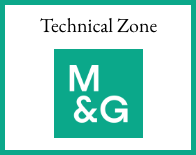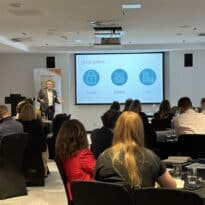Enabling technology can deliver giant leaps for the advice market, not least when onboarding clients, says Ross Laurie, CEO Visible Capital
If you look up ‘enabling technology’ you’ll find it defined as “Equipment and/or methodology that, alone or in combination with associated technologies, provides the means to generate giant leaps in performance and capabilities of the user.”
Who could not be excited by enabling technology when it can achieve “giant leaps” for businesses and users? Look around and you’ll see we’re surrounded by this exciting enabling technology in our daily lives: The Internet of Things (IoT), artificial intelligence (AI), blockchain, computer vision, voice recognition, robotics and virtual reality are all enabling technologies that extend our opportunities to engage with an increasingly expansive world – often from our sofa or office desk.
And the wealth management sector and wider financial markets have been quick to develop and adopt enabling technologies too, in order to provide clients with a better service, more efficiently and at a lower cost.
Perhaps one of the most transforming enabling technologies for financial advisers is intelligent automation.
Take the traditional onboarding process of clients for adviser firms, which is fraught with pain points, or what I prefer to call trip hazards, both for the customer looking to invest and the adviser/paraplanner/administrator who is trying to help them.
A typical potential advised client, using an established onboarding approach, could experience a journey littered with trip hazards en route to an onboarding result.
Let’s take as an example, simply acquiring income and expenditure details from the client to better understand their outgoings and their ability to invest/save for their future.
- Client finds that paper copies of their bank statements are not neatly filed as hoped and puts off the search for another day.
- Client needs to go to more than one bank to download online statements – puts off the task for another day.
- Eventually client has the required statements to hand but then needs to put them in the post or collate them in a useable format in an email.
Clients are human, often time restricted, and we all know how easy it is to procrastinate where personal admin tasks are involved.
So then the advice firm receives the statements:
- But the bank statements are incomplete and the client has to be contacted again.
- The paperwork is complete but it then has to be gone through painstakingly with a highlighter pen to identify items of income and expenditure.
- Income and expenditure data is manually keyed into the system, sometimes incurring errors which then need to be identified and corrected.
- Data is then processed through cashflow modelling software in order to achieve a detailed picture of the client’s financial position.
For both customer and adviser these are all rather “heart sink” tasks and it’s easy to see how getting the required data from a customer and processed within an advice firm can take far more time than is optimal when looking to bring on a new client.
It is no wonder that we are now seeing a surge in demand for automated onboarding for wealth management advice, powered by end clients who, in part driven by the acceleration in the use of digital services during the pandemic, are increasingly accustomed to using apps and online services and now feel hampered by a paper-based process.
Taking the bank statement example, automated onboarding technology now allows customers to use an open banking platform to share their transactional data, allowing advice firms to quickly access the information they need, already segregated into meaningful categories, which will quickly show them where they can best help their clients with their financial plans.
And this enabling technology is not restricted to bank accounts, it can be used for other areas of financial planning such as pensions and ISA data too.
For advice firms this means laborious administrative tasks can be reduced to literally the click of a mouse or a track pad and clients benefit from a faster, more accurate, hassle-free service.
Neither is it limited to client onboarding – swift, accurate data collection can massively improve advice firms’ performance when it comes to ongoing suitability assessment and client annual reviews.
There are many wins here from implementing this type of enabling technology.
Also, importantly for the future of the sector, automated data collation allows financial advice firms to compete with new entrants to the market such the robo and hybrid advice models, who will be vying for investors’ business, while retaining the one-to-one advice services which clients truly value.
‘Giant leaps’ indeed.
This article was first published in the July/August issue of Professional Paraplanner.




































